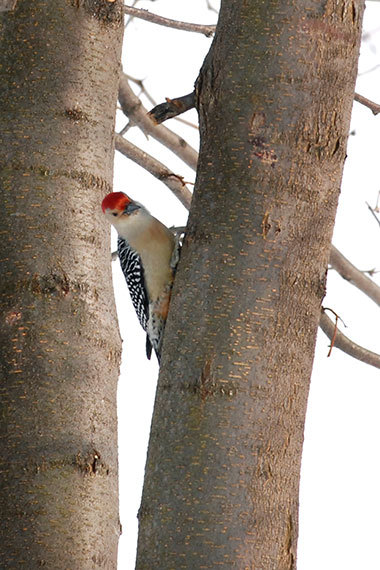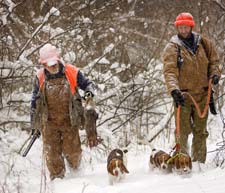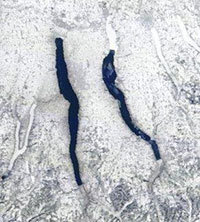|
Watchable Wildlife at the Adirondack Interpretive Center

Newcomb, Essex County
Explore boreal forest and wetland habitats in the heart of the Adirondack Mountains at the Adirondack Interpretive Center. Trails on the surrounding preserve take you through old-growth hemlock, spruce and northern hardwood forest, as well as near lake, river, stream and wetland environments. More than 100 species of birds, including woodpeckers and turkeys and a variety of waterfowl and raptors, have been sighted around the interpretive center and from the shore on Rich Lake. Observant visitors also have spotted beaver, white-tailed deer, red fox, coyote, mink, pine marten, otter and moose. In addition to the forested peninsula of Rich Lake, the best places to search for wildlife are from overlooks, boardwalks and bridges, and from the restored fire tower on Goodnow Mountain.
Nature Notes: Most active during the hours from dawn to dusk, martens spend the majority of their lives in and around coniferous forests, such as those with mature spruce or those having mixed hardwoods, especially beech trees. Read more about martens in Meet the Marten from the December 2007 Conservationist.
Find Great Rabbit Hunting at Layfayetteville MUA

Milan, Dutchess County
Hunters of small game in winter will find plenty to love at Lafayetteville Multiple Use Area (MUA). The property's 715 rolling acres of woods and fields are perfect habitat for cottontail rabbits. Rabbit hunting is at its peak in January, when plenty of fresh snow cover helps you track and bag your limit. Two town roads take you into the heart of the property, where you'll find four parking areas. Lafayetteville is conveniently located near the Taconic Parkway. DEC's Lafayetteville MUA webpage has more information.
Learn to Ski Month

January is Learn to Ski Month in New York. It's the perfect opportunity for newcomers to try the sport and for novices to hone their skills. With more than 50 downhill ski areas (the most in the U.S.), hundreds of cross-country venues, state forests and parks to explore, you don't have to travel far or spend much. Third and fourth-graders can ski or ride for free at most New York resorts. Ski Areas of New York, Inc. also has a learn-to-ski program ($35 for a lift ticket, lesson and rentals). Visit I Love NY's Skiing and Snowboarding webpage and Ski Areas of New York, Inc. for more information.
An Outdoor Discovery reader took advantage of the program last year. Learning to snowboard in New York has given me a greater appreciation for the resources available locally in our state. I encourage others to experience the numerous ski resorts in our great state of NY and take in the beauty of winter. - Mary Grose
Fishing for Perch in Central New York

Oneida County
With the unusually warm early winter weather we have been experiencing many boat anglers are taking full advantage of the situation. The boat launches on Seneca Lake, and many others, remain open for use. Yellow perch, a very popular fish for eating, can be caught in good numbers this time of year. One of the most popular and effective baits to use are small jigs tipped with small minnows. Two popular access sites are DEC's Severne Point Boating Access Site midway down on the west side of the lake off of Route 14 and Sampson State Park boat launch located off of Route 96A on the east side of the lake.
Safe and Sound: The presence of footprints on the ice should not be taken as evidence of safe ice conditions, particularly with the warmer weather. You should check ice conditions for yourself and avoid situations that appear to be risky.
Upcoming DEC Events
Conservationist Magazine

Can you tell what's pictured here? Hint: see page 2 of the December Conservationist. Also in this issue: learn how to build an emergency outdoor winter shelter and read about some hardy folks who commute to work all winter on bicycles. Also, join biologists as they go in the field to band ducks and count bats, and view some beautiful photos of the many waterfowl species that winter in New York! All this and more in the December Conservationist. Subscribe online or call 1-800-678-6399.
|







